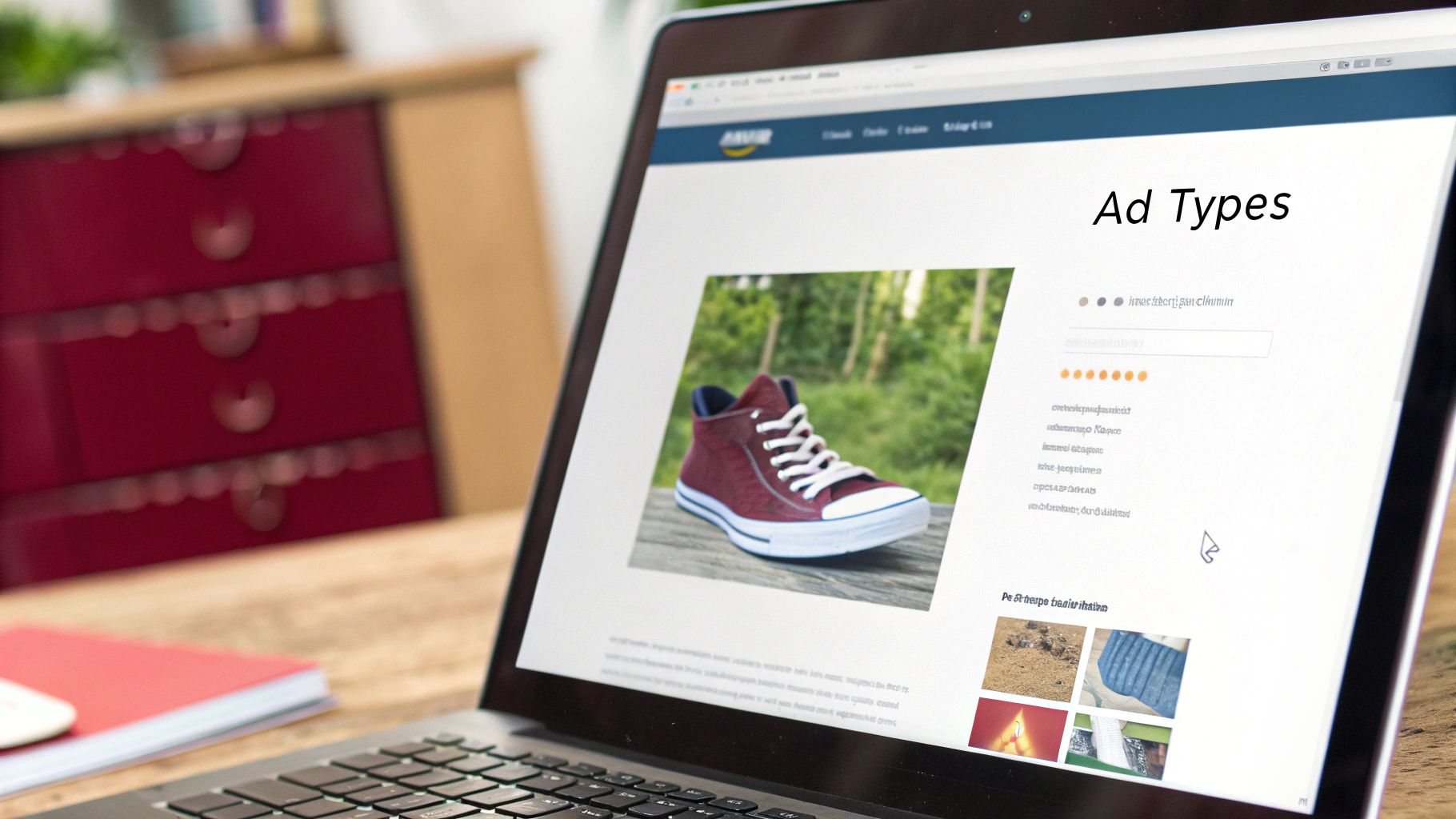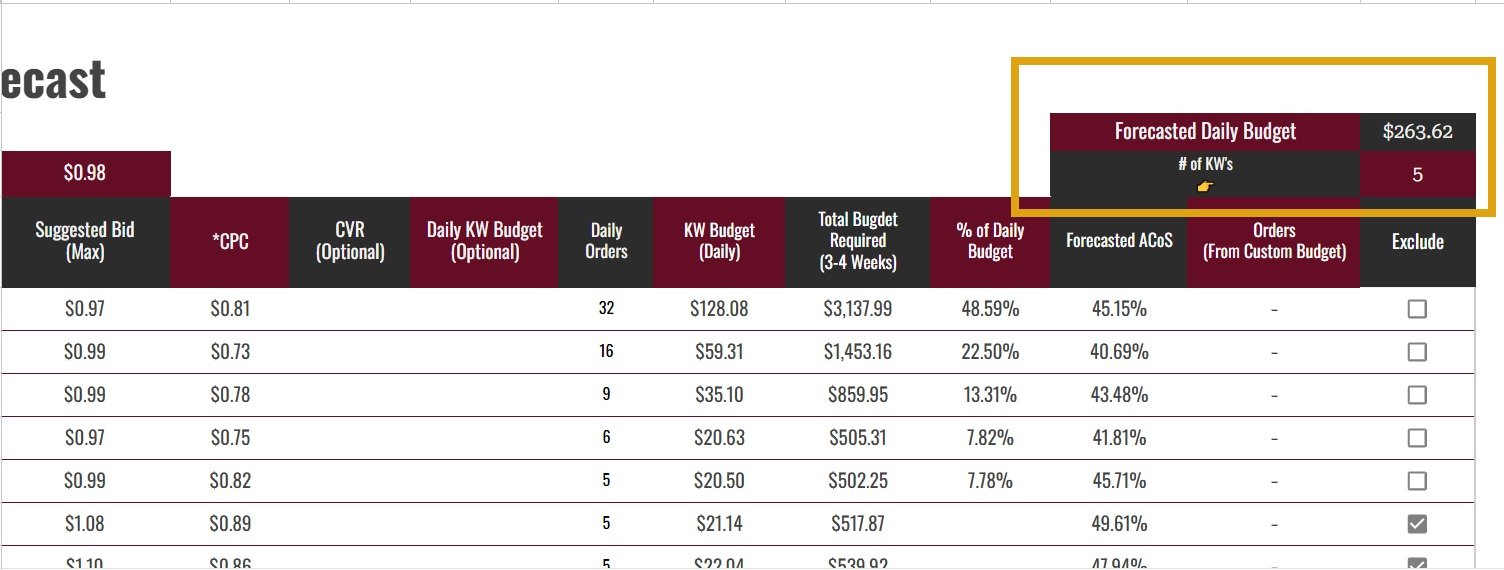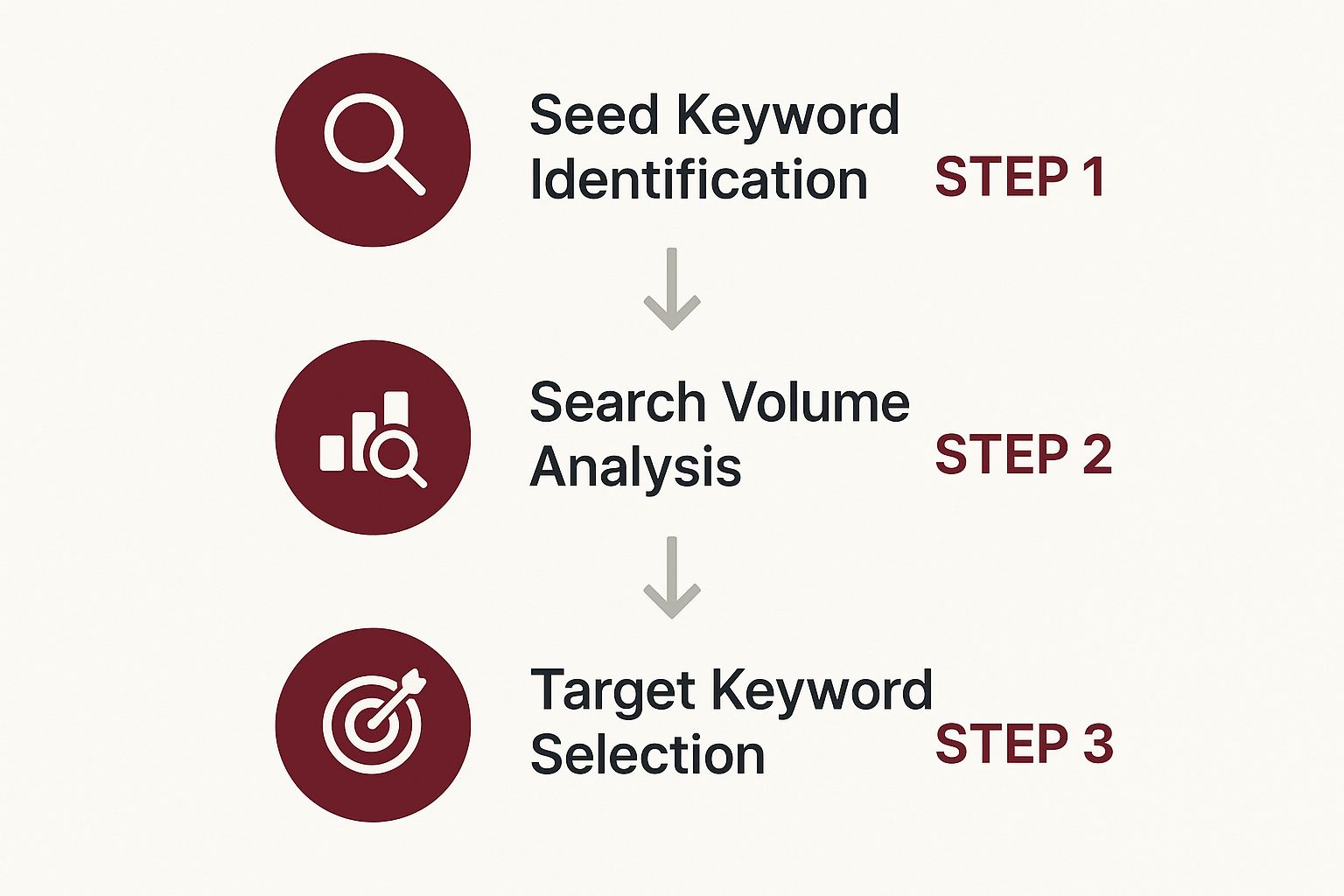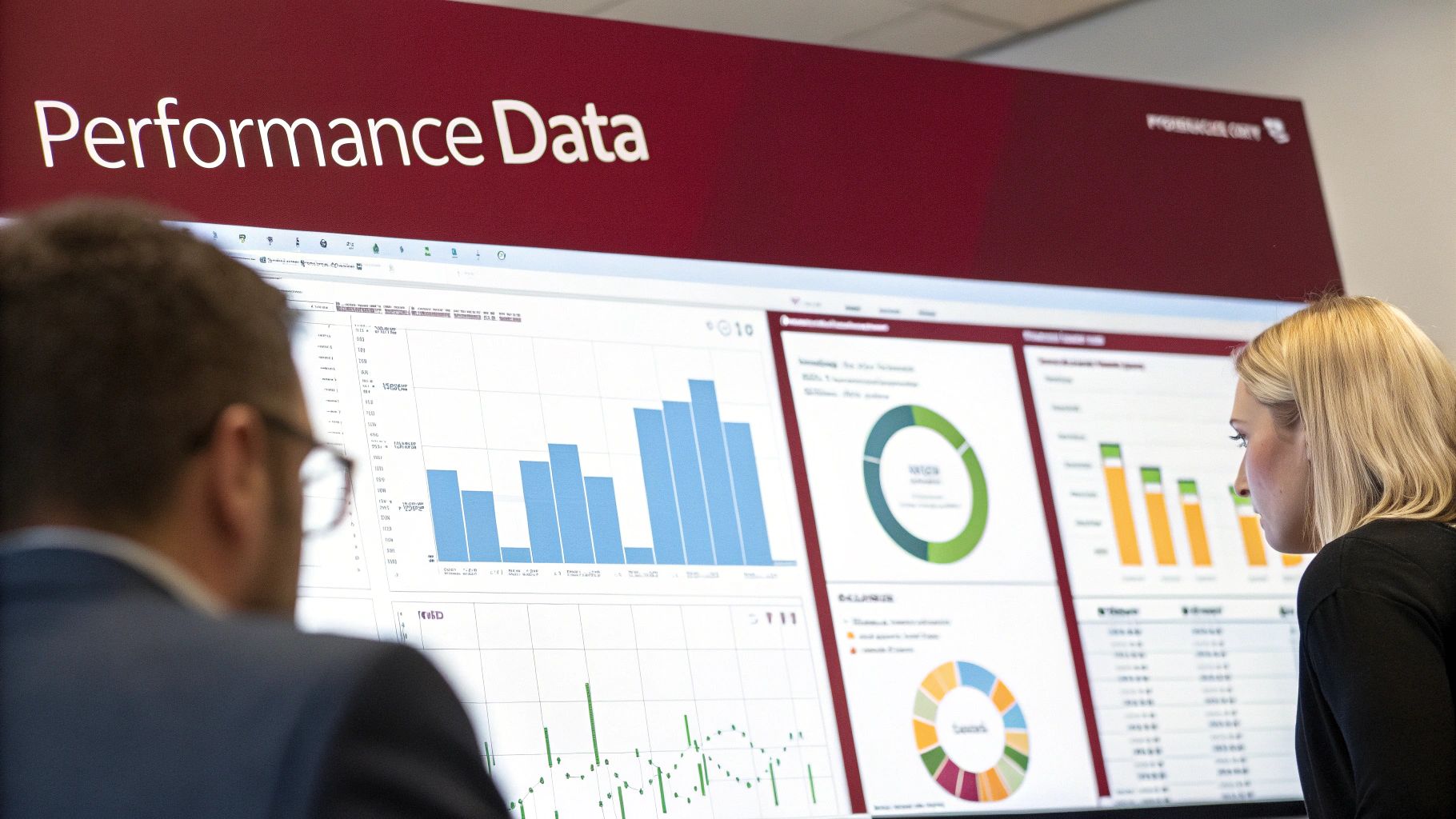Amazon advertising costs have climbed sharply over the last few years. Studies show that average CPCs rose by more than 11% year-over-year, and in 2025, most sellers pay around $0.80–$1.20 per click for Sponsored Products and up to $2.50 for Sponsored Brands.
With competition growing, the old “set it and forget it” approach no longer works. Sellers who run ads without a clear goal and strategy, end up draining budgets instead of building organic ranks.
The Profit Framework Overview
This guide lays out the 5-stage framework that successful sellers use. We’ll walk through each stage, from the prep work before you spend a dollar to scaling your campaigns without torching your margins.
The five stages are:
- Stage 1: Pre-Launch Preparation: Laying the foundation for success.
- Stage 2: Clean-Up and Data Acquisition: Gathering clean data to inform your strategy.
- Stage 3: The Profitability Engine: Building a system for consistent returns.
- Stage 4: Scaling With Discipline: Growing your ad spend without losing money.
- Stage 5: Advanced Optimization & Automation: Refining your strategy for long-term growth.
The point is to stop reacting to daily performance swings and start proactively managing your campaigns with a plan. The ad landscape on Amazon is only getting more crowded and expensive. In fact, Amazon’s ad revenues shot up 23% year-over-year to $15.69 billion in Q2 2024, which shows just how many brands are pouring money into the platform. You can see the full breakdown in this Nasdaq report.
If you’re just getting your feet wet with Amazon ads, it’s important to nail the basics first. You can get up to speed with our guide on what PPC is on Amazon. This framework will build on that foundational knowledge, giving you a complete system for success.
Core Principles Before You Start

Before you even think about spending a dollar on ads, your foundation has to be solid. Too many sellers jump straight into launching campaigns, only to watch their budget evaporate with hardly any sales to show for it.
Profit-First Advertising Mindset (Margin > Revenue)
It’s easy to get caught up in chasing big revenue numbers. But revenue doesn’t pay the bills; profit does. Your amazon paid ads management should always start with your profit margin. Know how much you make on each unit sold, so you know exactly how much you can afford to spend on ads and still make money.
Inventory & Budget Readiness
Don’t start scaling ads if you only have two weeks of inventory left. Running out of stock will crush your sales velocity and organic rank, undoing all your hard work. Make sure you have at least 30-45 days of inventory cover before you ramp up ad spend.
True North Metrics: ACoS, TACoS, and Profit
You need to track the right numbers.
- ACoS (Advertising Cost of Sale): This measures ad campaign efficiency (Total Ad Spend / Ad Sales). It’s a good start, but it doesn’t tell the whole story.
- TACoS (Total Advertising Cost of Sale): This is your true north (Total Ad Spend / Total Sales). A healthy, decreasing TACoS means your ads are successfully lifting your organic sales.
- Profit: The ultimate metric. Are you making more money at the end of the day? Always track profit on a SKU level.
Stage 1: Pre-Launch Preparation
1. Retail Readiness Audit (Images, Reviews, Pricing, SEO)
Every ad click sends a shopper to your product listing. If that page isn’t ready to convert them, you’re just paying for traffic that bounces.
Here’s a quick gut-check for your listing:
- Compelling Images: Does your main image stop the scroll? Are your other images demonstrating benefits and use cases?
- Strong Review Count: Aim for at least 15-20 reviews with an average rating of 4.3 stars or higher. Social proof drives conversions.
- Competitive Pricing: Is your price in the same ballpark as your main competitors? If not, your listing must communicate premium value.
- Optimized SEO: Your title, bullet points, and backend search terms need to be filled with relevant keywords.
2. SKU-Level Profit & Margin Benchmarking
Running ads without knowing your break-even point is like driving blindfolded. Before you launch, calculate your profit margin for that specific SKU. This is how you’ll figure out your break-even ACoS.
The formula is straightforward: (Sale Price – Amazon Fees – Cost of Goods) / Sale Price = Break-Even ACoS
If you sell a product for $40, your cost of goods is $10, and Amazon’s fees are $12, you’re left with $18 in profit. Your break-even ACoS would be $18 / $40 = 45%. This number is the guardrail for every campaign decision you make.
3. Keyword Research Strategy: Blending SEO and PPC Data
Your initial keyword list should be a mix of what you know about your product and what the data tells you. Use tools like Helium10 to find high-volume terms. What problems does your product solve? Use those phrases. A comprehensive guide on keyword research for Amazon can help you build this initial list.
4. PPC Campaign Structure and Portfolio
Keep it clean from the start. Create a separate portfolio for each main product or product line. This prevents budget overlap and makes it much easier to analyze performance at a glance. A messy structure is a nightmare to manage and scale.
Pre-Launch Budget Plan and Target KPIs
Before launching Amazon ads, estimate your PPC budget based on your main keywords. Check how much daily budget you’ll need to rank for those specific terms. For example, the Budget Planner might show that targeting your top 5 keywords requires around $250 per day. This helps you plan both finances and inventory more effectively.

Create your PPC Budget planner by following the guidelines in this guide on Amazon PPC cost estimation.
Stage 2: Clean-Up and Data Acquisition
This stage is all about gathering clean data and cleaning old data.
1. Remove Duplicate & Overlapping Campaigns/keywords
Before launching new campaigns, do a quick audit. Make sure you don’t have old, forgotten campaigns targeting the same keywords. This prevents you from bidding against yourself and muddying the data.
2. Retain Campaigns That Drive Net Profit
Keep only the campaigns and keywords where ACOS is below your breakeven ACOS and the contribution to TACOS is positive. These are your reliable profit sources. Keep them active and increase bids bit by bit here but continue to monitor if performance remains stable.
3. Remove Budget Drainers
Pause or archive campaigns or keywords that spend consistently without orders. Redirect that budget toward proven, high conversion keywords. Every dollar reallocated from waste improves total profitability.
4. Rebuild Using Real Conversion Data
Do not start from scratch. Pull Search Term Reports from the last 60 days data and identify converting search terms. Create new manual campaigns separating Exact, Phrase, and Broad matches.
5. Set Up Bidding With Profit Control
Go with Dynamic Bids (Down Only) to maintain cost discipline while campaigns stabilize. Once conversions start showing a positive margin trend, test Dynamic Up & Down or Fixed Bids only on top-performing keywords.
6. Target New High-Intent Keywords
Identify 5–10 new keywords relevant to your product. Use tools like Helium10, brand analytics e.g search query performance reports, and Auto, broad, phrase campaigns data to find them. Launch Exact campaigns separately to control testing.
7. Rebuild Auto Campaigns for Discovery
Set up new Auto campaigns to identify profitable search terms at a controlled daily budget. Review them weekly and move converting keywords into manual campaigns with stronger bidding control.
8. Add Negatives Aggressively
Add every non-converting or irrelevant term as a negative keyword. This prevents your budget from flowing toward unprofitable clicks. Apply negatives across Auto and Manual campaigns for full coverage.
9. Use Placement Adjustments
Regularly check placement performance. If Top of Search delivers profitable conversions, increase the percentage slightly to capture more. If Product Pages or Rest of Search drain the budget without results, reduce their bid multipliers immediately.
10. Continuous Profit Optimization
Amazon PPC campaigns are not set and forget thing. Track ACOS, TACOS, conversion rate, and cost per order together not in isolation. Review placement performance weekly and adjust bids where profit per order is highest. Remove emotional decision-making and rely on data showing where your margins grow.
14-Day Benchmark Metrics (CTR, CVR, Spend per Order)
After about 14 days, you should have enough data for a baseline. What’s your average CTR? Your conversion rate (CVR)? How much are you spending to get one order? These numbers become your benchmark for future optimizations.
Stage 3: The Profitability Engine

Alright, you’ve gathered data. Now, it’s time to turn that ad spend into consistent, predictable profit. We’re moving from discovery to disciplined execution.
1. The Keyword Graduation Process (Auto → Broad → Exact)
Keyword Graduation is important process of Amazon PPC. It’s a way to promote keywords from learners to earners.
- From Auto to Broad: You find a winning search term in your Auto campaign. You add this phrase as a Broad Match keyword into a separate manual campaign.
- From Broad to Exact: If that keyword performs well in Broad Match, you promote it again, adding it as an Exact Match keyword to a high-control Exact campaign.
- Closing the Loop: Once a keyword is in an Exact Match campaign, add it as a negative exact keyword in the Auto and Broad campaigns it came from. This stops your campaigns from bidding against each other and forces Amazon to use the most efficient match type.
2. Bid Management Based on RPA (Revenue Per Acquisition)
Setting the random bid could result into more cost per click and more budget. Use the formula below to calcualte your taget bid
Target Bid = (Revenue Per Acquisition) x (Conversion Rate) x (Target ACoS)
Let’s use real numbers:
- Revenue Per Acquisition (RPA): Your product sells for $50.
- Conversion Rate (CVR): Current conversion rate of keyword is 10%.
- Target ACoS: You’re aiming for a 30% ACoS.
Calculation: $50 x 0.10 x 0.30 = $1.50. This means you can bid up to $1.50 per click and expect to hit your profitability target.
3. Placement Optimization (Top of Search, Product Pages)
Placement performance directly impacts profit. Ads appearing at the Top of Search often get higher CTR and CVR, but also come with higher CPCs. Product Page placements usually get low CPC, yet can deliver stronger conversion rates from shoppers already comparing options.
In campaign settings, use “Adjust bids by placement” to steer budget toward what drives profit. If Top of Search consistently delivers strong conversions, apply a +20–25% bid adjustment. If Product Pages show weak returns, lower the adjustment or remove it entirely.
This level of control and optimization is what defines true paid search intelligence.
4. Conversion Rate Optimization on Listings
Never stop working on your listing’s conversion rate. Pushing your CVR from 10% to just 15% can have a huge impact on your ad profitability.
If your ads bring in 1,000 visitors a month and your listing converts at 10%. That means you get 100 orders. Now, if you improve your listing and raise the conversion rate to 15%, you’ll get 150 orders from the exact same 1,000 visitors and the same ad budget.
If you want to study it in detail then check out our guide on boosting your Amazon CTR.
5. Budget Segmentation by Campaign Type
Distribute your budget wisely. Ensure that your Exact Match campaigns, which include the high conversion keywords, receive the majority of the budget.
Keyword research campaigns, such as Automatic and Broad Match, should be allocated sufficient funds to continue identifying potential new opportunities, but they should not consume the largest portion of your budget.
6. Keyword Rank Tracking
Use a tool like Helium10 to track your organic rank for your most important keywords. This helps you see if your PPC efforts are creating that “flywheel effect” and improving your overall organic ranks.
7. Weekly and Monthly Optimization Routine
Consistency is key. You don’t need to live in your ad account, but a regular check-in is non-negotiable.
- Weekly: Harvest winning search terms, add new negative keywords, and adjust bids on your top-spending keywords.
- Monthly: Review overall performance against your TACoS and profit goals. Are you moving in the right direction?
Stage 4: Scaling With Discipline

This is where many sellers get burned. You finally have a profitable campaign, so you think, “Let’s double the bid!” A week later, your ACoS has shot through the roof.
1. Profit-Based Scaling Criteria (TACoS, Margin, Inventory Health)
Before increasing a budget, use a clear checklist.
- TACoS: Is your Total Advertising Cost of Sale stable or decreasing? If it’s climbing as you spend more, you’re just buying sales, not growing.
- Profit Margin: Are your scaled campaigns still making money after all costs?
- Inventory Health: Can you handle a jump in sales? Ensure you have enough stock.
2. Scaling Every SKU vs. the Top 80% Revenue Generators
Don’t try to scale everything at once. Identify the top 20% of your products that drive 80% of your revenue. Focus your scaling efforts there first for the biggest impact.
3. Brand Defense Strategy
Running ads on your own brand name feels counterintuitive, but it’s essential. If you don’t bid on your brand name, your competitors will, placing their products right above your organic listing and get sales.
4. Branded vs Non-Branded Keyword Strategy
Branded campaigns usually have a great ACoS, but are they actually adding sales or just stealing clicks from your organic listings?
Here’s a simple test: Pause your branded campaigns for one week. Check your Search Query Performance report in Brand Analytics. Did your brand’s total market share for those search terms drop? If so, competitors jumped in. Turn the campaign back on. If your market share held steady, customers just clicked your organic listing instead, meaning the ad was cannibalizing sales.
5. Keyword Cannibalization
Apply the same logic to keywords where you already hold the #1 organic rank. Bidding on a keyword where you’re already #1 might just be paying for a click you were going to get anyway. Run the same test: pause the ad for that keyword and watch your total sales. If they don’t drop, reallocate that ad spend to keywords where you need to gain ground.
6. Expanding Into Sponsored Brands and Display Campaigns
Once your Sponsored Products campaigns are running smoothly, it’s time to broaden your reach.
- Sponsored Brands: Use these top-of-page headline search ads for brand building and driving traffic to your Amazon Store.
- Sponsored Display: This is your tool for retargeting. Show ads to shoppers who viewed your product but didn’t buy.
7. Portfolio-Level Budget Control
Use portfolios to set monthly or event-based budgets for groups of campaigns. This is great for controlling spend during holidays or product launches without having to adjust dozens of individual campaign budgets.
8. Retargeting Through Sponsored Display or DSP
Sponsored Display is the easiest way to start retargeting. It reminds shoppers about your product as they browse other pages on and off Amazon, bringing them back to close the deal.
9. Managing Ad Fatigue and Scaling Pace
Don’t increase your budgets too quickly. A gradual increase of 15-20% per week on profitable campaigns is much safer than doubling it overnight. This gives the algorithm time to adjust and prevents your ACoS from spiking.
Stage 5: Advanced Optimization & Automation
When performance plateaus, it’s a sign you need more advanced tactics. Managing a mature ad account is about precision tuning.
Combatting Plateaued Performance
If your growth has stalled, it’s time to experiment. Test new ad creatives, try video ads, or target different customer segments with Sponsored Display. The goal is to find new pockets of growth.
Using Dayparting
Dayparting means adjusting your bids based on the time of day. If you notice you get more sales in the evening, use a third-party tool to automatically increase your bids during those peak hours and lower them overnight. This focuses your budget when shoppers are most likely to buy.
Audience Data for Retargeting
Go deeper with Sponsored Display audiences. You can retarget not only people who viewed your product, but also those who viewed similar products or are in certain lifestyle segments. This is a powerful way to find new customers.
Seasonal and Event-Based Scaling (Prime Day, Black Friday)
For big shopping events, you can’t use a normal budget. Amazon has a built-in feature to schedule a bid increase for specific events. Go into your campaign settings and set your bids to automatically increase by up to 50% during the event window to stay competitive.
DIY Management vs. Hiring an Expert
When should you hire help?
- You’re spending more than 5-10 hours a week on ads and not seeing results.
- Your ad spend is growing beyond what you’re comfortable managing (often over $5,000/month).
- You’re ready to use advanced ad types like DSP.
A good agency or consultant for Amazon ads management services brings expertise and a strategic perspective that can be hard to develop on your own.
Importance of SEO and PPC Integration

One of the biggest mistakes sellers make is treating PPC and SEO as separate jobs. They are two sides of the same coin.
How SEO supports PPC (CTR, Keyword placement)
A strong SEO foundation helps your PPC campaigns perform better. When your listing is well-optimized with relevant keywords in the title, bullets, and backend, Amazon’s algorithm recognizes your product as a strong match. This helps Amazon PPC campaigns like auto campaigns to target additional related keywords.
How PPC Drives Organic Keyword Growth
PPC drives keyword discovery and indexing. When your Auto or Broad campaigns generate orders from new keywords, Amazon automatically indexes your listing for those terms and their related variations. Over time, this improves organic visibility and strengthens SEO.
In short, SEO helps PPC ads perform efficiently, while PPC helps listings gain faster organic keyword indexing. Both work together to improve ranking and overall profitability.
Balancing Organic vs. Paid Keyword Strategy
As your organic rank climbs, you become less dependent on ads for those keywords. This frees up your budget to target new terms. For a mature product, a good goal is to have at least 70% of your total sales come from organic traffic.
Reporting & Decision Framework
You can’t improve what you don’t measure. A clear reporting system is essential for making smart decisions.
Key Dashboard Metrics to Track Daily
A quick daily check of these metrics can help you spot problems early:
- CTR
- Total Spend
- Total Sales (Ad and Organic)
- ACoS and TACoS
- SKU Level Profitability
TACoS: Your Core Profit Indicator
While ACoS measures campaign efficiency, TACoS measures the health of your entire business on Amazon. If your TACoS is going down over time, it’s a strong sign your advertising is effectively growing your brand and organic sales.
Account Basis vs Product Level KPIs tracking
Tracking KPIs at the account level gives you a big-picture view, but the real insights come from tracking at the product (SKU) level. Each product has a different price, margin, and conversion rate. Managing them individually is the only way to ensure every part of your ad spend is profitable.
Common Mistakes to Avoid
Finally, let’s cover the common pitfalls that trip up even experienced sellers. Avoiding these will save you a lot of time and money.
Aggressive Bid Set at Early Stage
When you launch a new campaign, start with modest bids. Setting them too high from the beginning will burn through your budget before you’ve gathered any useful data. Increase bids slowly, based on performance.
Scaling Too Early Without Data
Don’t scale a campaign just because it had one good day. Wait until you have a consistent track record of profitability over at least a week or two. Scaling based on emotion or limited data is a recipe for disaster.
Focusing Only on ACoS
A low ACoS is great, but it’s not the only metric that matters. A campaign with a 15% ACoS might look good, but if it’s only generating a handful of sales, it’s not moving the needle. Focus on total profit and TACoS.
Ignoring Listing Optimization During PPC
Your ad performance is directly tied to your listing quality. If your CTR or CVR is low, don’t just blame the ad. Go back and look at your main image, title, and price. Continuous listing optimization is a part of good amazon product ads management.
Frequently Asked Questions
Is Amazon PPC worth it?
Yes, when done strategically, Amazon PPC is one of the most profitable tools for brand growth. Through structured Amazon ads management, campaigns can drive both paid and organic ranks. The real value comes from building a system that tracks TACoS, profit, and conversion rate not just ACoS.
How much does it cost to advertise on Amazon?
The cost depends on your product category, bids, and competition level. A good starting budget is between $50–$100 per day for a new product. Budgets are based on keyword-level cost analysis, break-even ACoS, and profit margins not arbitrary numbers.
You should always ensure inventory stability before increasing daily spend to maintain consistent campaign growth.
How long does it take for Amazon PPC to work?
Expect initial performance data within 10–14 days, but profitability usually takes 8–10 weeks of ongoing optimization. Campaigns need time to collect clean data through impressions, clicks, and conversions. With steady bid adjustments, negative keywords, and listing improvements, your ads will gradually evolve from testing to profit generation.
How to structure an Amazon PPC campaign?
A clean and organized structure is the foundation of effective Amazon ads management. Use one ad group per match type and include 5–10 tightly related keywords. Name campaigns clearly, such as
Brand Name – Product Name – Ad Type – Match Type – Keyword Source – Purpose – Date
Keep Exact campaigns for high-performing ranking keywords and use Broad,Phrase or Auto campaigns to discover new opportunities.
How to find keywords for Amazon PPC?
Use tools like Helium10 Cerebro & Magnet, Amazon Brand Analytics, and Search Term Reports.
Can you run Amazon PPC campaigns with brand name keywords?
You are allowed to target both your own brand name and those of your competitors in Amazon PPC campaigns.
How many keywords can I use in an Amazon PPC campaign?
Limit each ad group to 5–10 keywords. Adding too many spreads your budget too thin and makes it hard to track performance.





